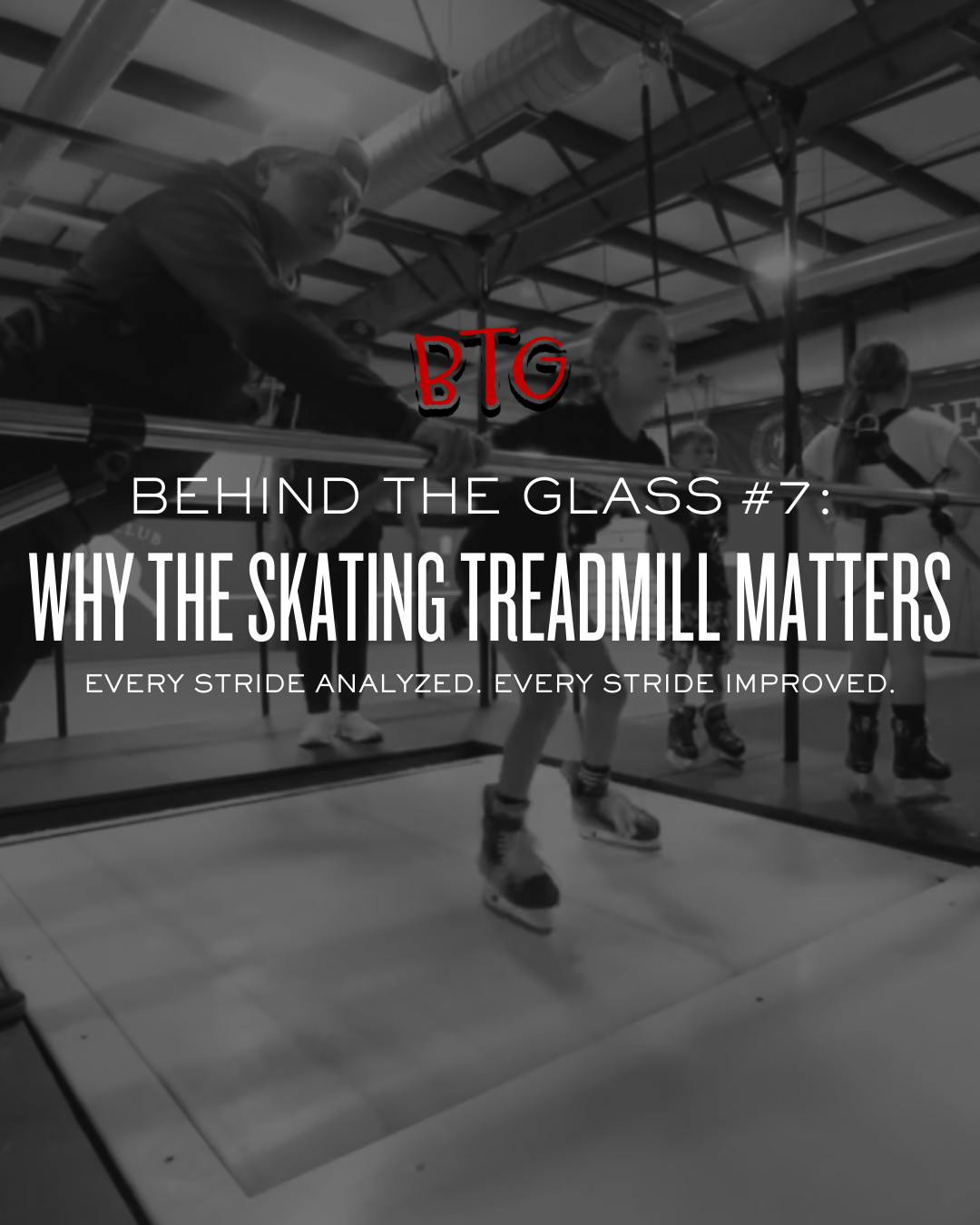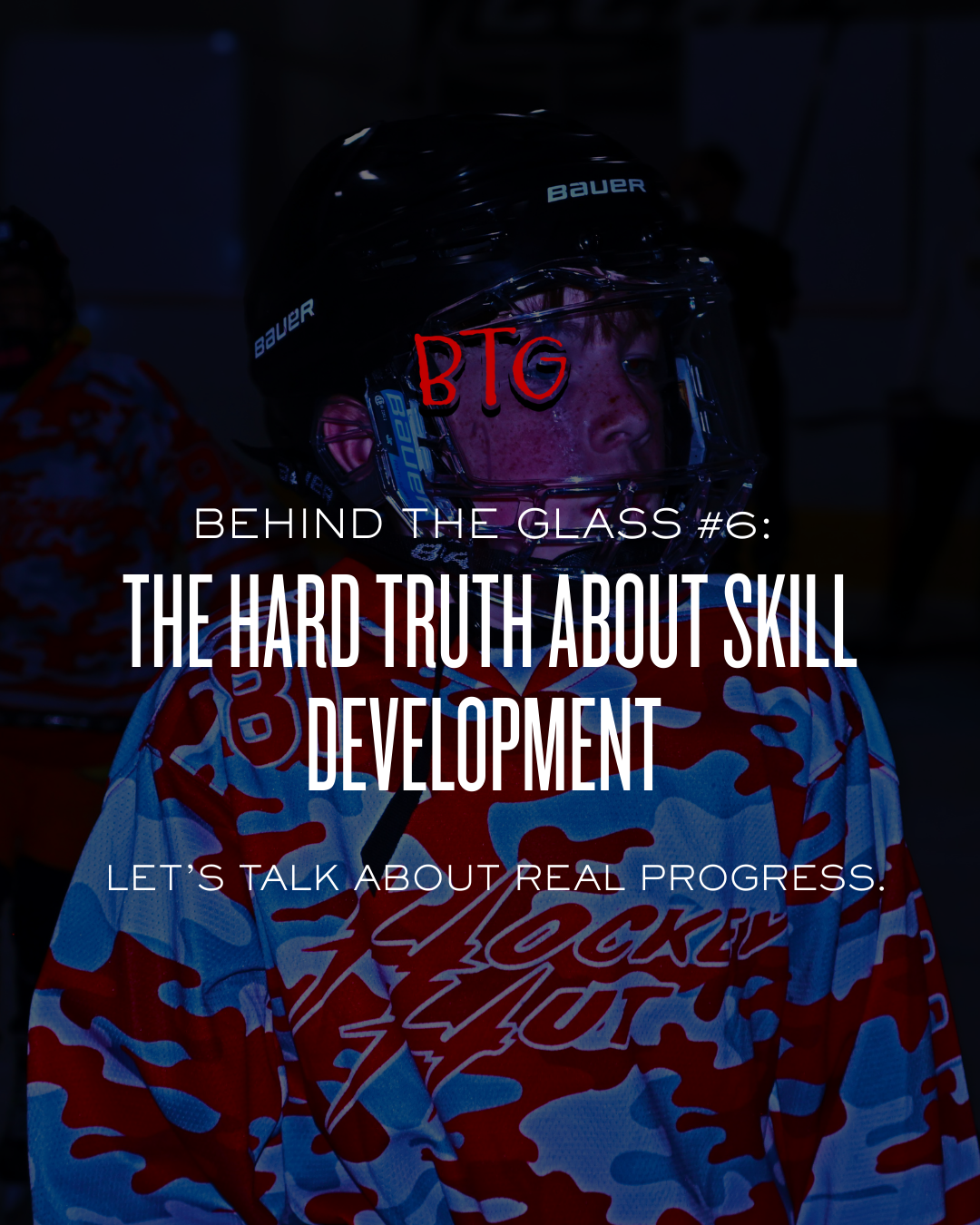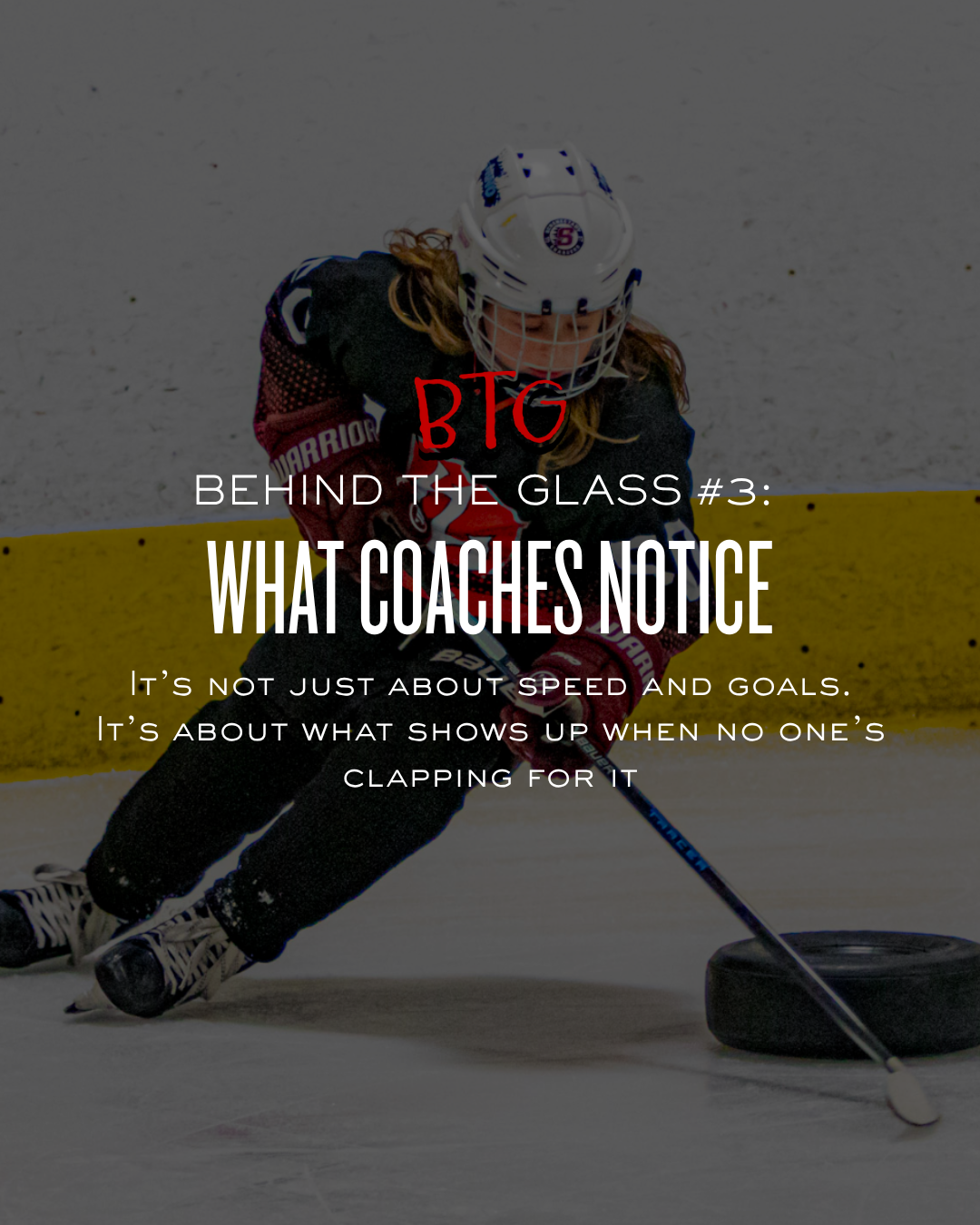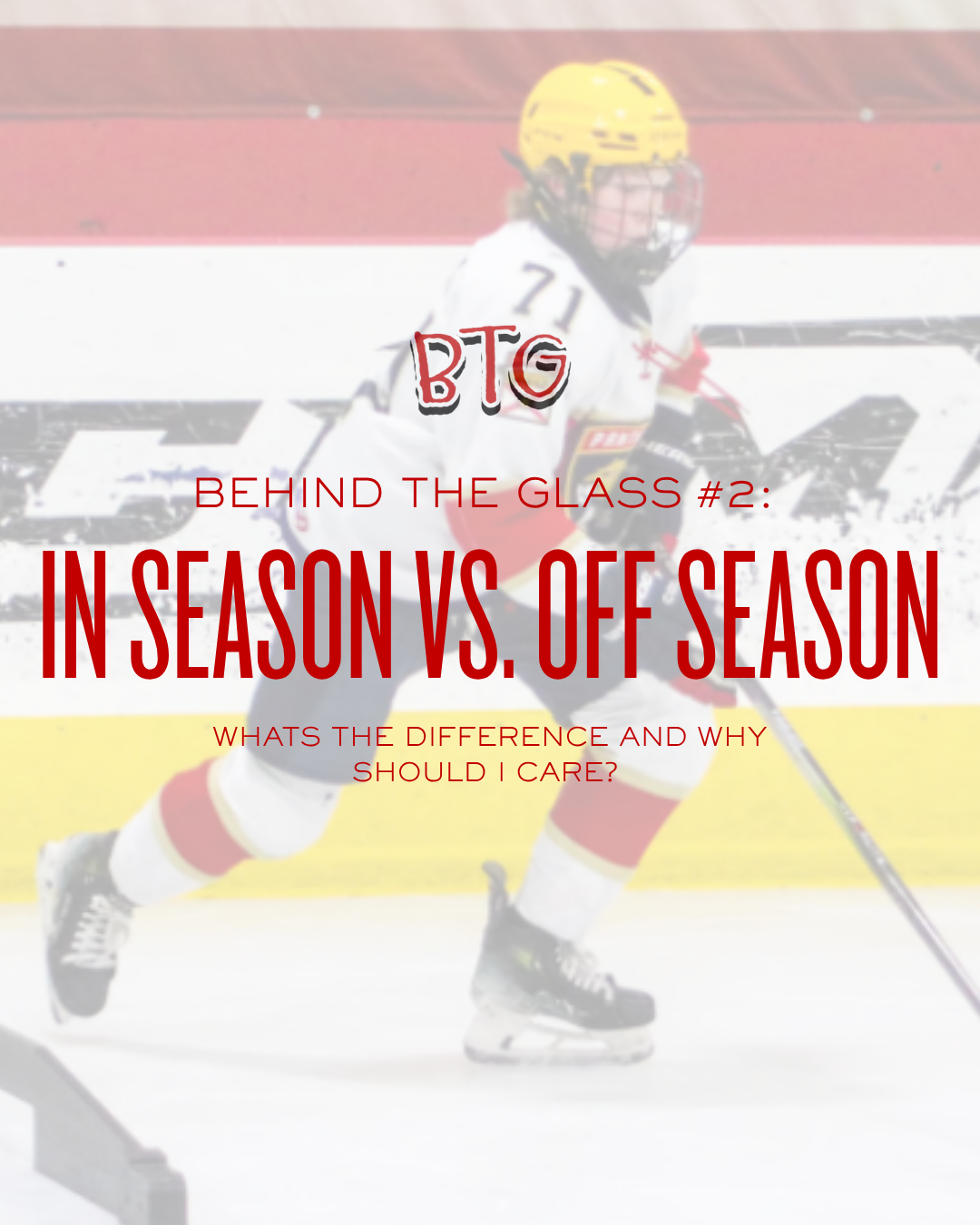Uncategorized
Behind the Glass #7 | Why the Skating Treadmill Matters
Everything we do, from our Excel Power Skating programs to our small-group skill sessions, is built around the principle of maximizing athletic development everyday. The return of the skating treadmill gives us another powerful tool to help athletes become stronger, faster, and more efficient on the ice.
Why the Skating Treadmill?
Skating is the separating skill in hockey. The best players are not only faster, but they are more efficient in their stride. They cover more ice with less wasted energy. The treadmill allows us to take stride mechanics out of the chaos of a game or practice and put them into a controlled environment where every detail can be isolated, analyzed, and improved.
On the treadmill, we can break down stride length, edge control, balance, and power transfer. These are the building blocks of explosive skating. By isolating these elements, athletes develop stronger habits that carry directly to live game play.
Real-Time Feedback That Works
What makes the treadmill truly different is the feedback loop. Athletes don’t just hear a coach’s correction — they see it. Using immediate video review and a replay system, players can watch their stride right after each rep. That means they understand the correction in real time and apply it on the very next stride.
This combination of instant feedback and consistent repetition accelerates development in a way that open-ice training cannot.
The Excel Advantage, Year-Round
We are not simply putting players on a machine and asking them to skate. The Hockey Hut has integrated our proven Excel Power Skating system into the treadmill. This progression has been refined over years of working with athletes at every level, from beginners to future professionals.
Now, with the treadmill, athletes can access that structured progression all year long. It is the same sequence of stride efficiency, balance, and power development that has always been a core part of our training, now available in a new environment that maximizes every rep.
Why It Matters Now
The pace of hockey has never been faster. Players who can generate speed quickly, sustain their stride, and move efficiently will always stand out. The treadmill ensures no stride is wasted, no detail overlooked, and no opportunity missed.
For players who are ready to advance, this is the environment that takes good skaters and turns them into great ones.
Maximizing Athletic Development Every Day
The skating treadmill is not a gimmick. It is an extension of everything we believe at The Hockey Hut: that development is maximized when athletes are coached with precision, challenged with purpose, and given the tools to see and understand their own growth.
Every session on the treadmill is built to improve performance, build confidence, and prepare athletes to excel in the moments that matter most.
Step Onto the Tread. Step Ahead of the Game.
Whether you are looking to strengthen your foundation or refine elite details, the treadmill offers a proven path to better skating.
Behind the Glass #6: The Hard Truth About Skill Development
Growth Takes Time. Commit to the Process.
Everyone wants to see results right away. You go to a clinic, hit a few reps, and expect to feel sharper the next time you hit the ice. But real development doesn't work like that. At The Hockey Hut, we’re here to tell you the truth — and more importantly, guide you through it.
The Illusion of the Quick Fix
We live in a world of instant results. Athletes think they can show up to one clinic and fix a weakness. That they’ll learn one new drill and suddenly dominate their next game. But true growth as a hockey player doesn't come from one-off sessions. It comes from consistent work, day after day.
Quick fixes give you a moment of clarity. They can be helpful. But they won't make you elite.
What Clinics Are For — And What They Aren’t
Skills clinics are a great tool. They're a way to get exposure to high-level drills, sharpen a specific area, or get a feel for a coaching staff. We run them regularly at The Hut, and there's a reason they fill up. They're valuable.
But if you're serious about long-term growth, clinics aren't the full answer. Think of them as a spark. Semi-private training is the fuel.
Semi-Private Training Builds Real Athletes
When you train with us in a semi-private setting, you're getting more than ice time. You're getting:
-
Reps that are tailored to your level and your goals
-
Feedback that sticks, because we see you week after week
-
Progress you can feel, not just in the moment, but over the months
-
Accountability, structure, and support
You show up with focus. We show up with purpose. That combination is what leads to real athletic development.
The Hut Difference
At The Hockey Hut, we believe in maximizing athletic development every single day. We believe in honest coaching, and in being with our athletes for the long haul. We’re not interested in gimmicks or shortcuts. We’re here to help you build habits, skill, IQ, and confidence.
The players who stick with it — the ones who come back each week and put in the reps even when it’s hard — are the ones who level up.
Your Game Deserves More
You want to be great? Start by showing up. Then show up again. Trust the work. Stay locked in. And know that every skate, every rep, every correction, every small win is building toward something bigger.
We’re ready to commit to you. You just have to commit to the process.
https://myhockeyhut.com/programs/semi-private-lessons/
Behind the Glass | #4 The Parent’s Role in Development
At The Hockey Hut, we spend hours every day on the ice with athletes. We break down stride mechanics, teach decision-making, correct stick positioning, and challenge mindset.
But one thing we know for sure is this:
Development doesn’t stop when the session ends.
Some of the most important factors that shape an athlete’s growth happen off the ice. And often, they start with the people watching from behind the glass.
As a parent, your role in your athlete’s development is massive.
Not because you need to coach — but because of the environment you create.
What Helps Your Athlete Grow
Here’s what we’ve seen work — over and over again — from families who raise confident, driven, and resilient athletes:
Encouragement over critique.
Players need feedback from their coaches. From parents, they need belief. Ask how they felt about their performance before jumping in with your own. Celebrate effort, not just results.
Support the process, not just the outcome.
Skill takes time. Progress isn’t always visible in every game or practice. When parents stay patient and trust the system, athletes feel more secure and focused on doing the work.
Focus on habits, not highlights.
We see the biggest leaps when families get excited about small wins — showing up early, bouncing back from mistakes, or applying a correction from last week. These are the moments that actually move the needle.
What Slows Progress Down
We say this with full respect: even well-intentioned support can backfire when it’s rooted in pressure or comparison.
Car ride coaching.
Replaying every shift in the car, critiquing plays, or comparing to teammates can erode your child’s confidence. Let them breathe. Let the rink be the rink.
Obsessing over stats or ice time.
Coaches make decisions based on development plans, game flow, and a hundred things parents may not see. Focus on what your athlete can control — attitude, effort, and consistency.
Trying to coach over the coach.
Your player hears enough voices already. When parents send mixed messages, it causes confusion and hesitation on the ice. Trust the plan. If you have questions, ask us directly — we want to work with you.
Our Philosophy at The Hut
You don’t need to be a hockey expert to help your child succeed.
You just need to be consistent, positive, and steady when things get hard.
We’ll take care of building the hockey player.
You take care of building the confidence that holds it all together.
Together, we create an environment where players can fall in love with the process — and grow from it.
Why This Matters
The players who stick with the game and succeed at higher levels usually have one thing in common — not elite talent, but elite support.
The ones who train harder, bounce back quicker, and compete with confidence are almost always the ones who feel safe to try, fail, learn, and grow.
And that safety starts with you.
Let’s Build Them Up, Together
Whether your athlete is just starting or chasing a higher level, we’re here to develop them on the ice — but we can’t do it alone.
Your role is just as important. And together, we can help them become not just better hockey players, but stronger, more confident people.
Thanks for being part of the process.
We’re proud to be part of yours.
Behind the Glass #3 | What Coaches Notice
At The Hockey Hut, we talk a lot about the how and why behind development. But one of the biggest questions athletes and parents ask — even if they don’t say it out loud — is this:
“What do coaches actually notice?”
It’s easy to assume it’s goals, speed, and flashy plays. And yes, those things help. But ask any coach who’s been around long enough, and they’ll tell you the truth:
The best players aren’t always the flashiest.
They’re the ones doing the little things right. Over and over. Especially when no one’s clapping for it.
Coaches Notice Body Language
This one is a constant.
How do you react after a bad shift? A mistake? A hard correction?
Do your shoulders drop? Do you avoid eye contact? Do you check out?
Or do you skate back into the drill like it matters? Do you hold your standard even when no one’s looking?
We coach players every day on how to carry themselves — because how you show up in the small moments tells us a lot about how you’ll show up in the big ones.
Coaches Notice Compete Level
We notice when you turn it on... and when you turn it off.
Do you battle for a loose puck when you're tired?
Do you skate through the line or glide in the last two strides?
Do you give effort when it’s hard — not just when it’s easy?
The players who rise aren’t waiting to be pushed. They’re the ones setting the tone.
Coaches Notice Decision-Making
Hockey IQ isn’t just about being smart — it’s about being present.
Coaches pay attention to how you play without the puck. Your spacing. Your timing. Your choices under pressure. Are you reading or reacting? Are you watching or anticipating?
We train this constantly at The Hut — in small-area games, transition drills, and in the conversations between reps. Great decisions come from game awareness, not just instinct.
Coaches Notice Coachability
This one’s big — and we mean it.
Are you really listening? Or just nodding?
Are you willing to be uncomfortable, to fix something even if it feels awkward at first?
Coachable players grow faster because they’re not afraid to get it wrong before they get it right. And coaches notice that. Fast.
Why It Matters
What separates the athletes who get noticed from the ones who blend in isn’t always skill.
It’s presence. Intention. Consistency.
You don’t need to be the biggest or the fastest to stand out.
You need to care about the right things — and train like they matter.
That’s why we do what we do at The Hockey Hut.
We don’t just put players on the ice and run drills.
We develop habits. We teach awareness. We build athletes coaches can trust — because that’s what moves the needle at every level.
Ready to Train Like It Matters?
Whether it’s summer camps, elite classes, or semi-private training, every session at The Hockey Hut is designed to develop players who get noticed — for the right reasons.
Train smarter. Show up with purpose.
And take your development Behind the Glass.
Behind the Glass #2 | In-Season vs. Off-Season Training
At The Hockey Hut, our mission is simple:
Maximize athletic development every single day.
But that doesn’t mean we train the same way all year long — and it shouldn’t.
Too many players fall into the trap of repeating the same routines whether it’s August or January. But high-performing athletes don’t just work hard. They work with purpose. And that starts with understanding the difference between in-season and off-season training.
So, what’s the difference?
In-Season Training: Stay Sharp. Stay Game-Ready.
In-season training isn’t about massive changes. It’s about maintaining the edge you’ve built.
We focus on:
-
Short, high-quality sessions
-
Sharpening technique and timing
-
Decision-making under game-like fatigue
-
Smart recovery and movement prep
You’re already in games.
Our job is to keep you fast, efficient, and confident without wearing you down.
Off-Season Training: Grow Where the Game Won’t Let You
The off-season is your opportunity to evolve.
You’re not prepping for Friday’s puck drop — which means we can dial up the intensity, volume, and focus.
We use this time to:
-
Build on existing skills and create better habits
-
Address mechanical flaws
-
Add speed, strength, and control
-
Push mental toughness and capacity
This is where we challenge your limits without sacrificing performance.
This is where real development happens.
Why It Matters
When you train the same way year-round, you lose progress.
When you train with intent, you build a better athlete — on and off the ice.
At The Hockey Hut, everything we run — summer camps, elite classes, and semi-privates — is built around where you are in your season. That’s how we maximize athletic development, every day, for every player.
Ready to take the off-season seriously?
We’re here to coach you through the work that changes your game.
Join our summer programs and let’s build what the in-season can’t.





